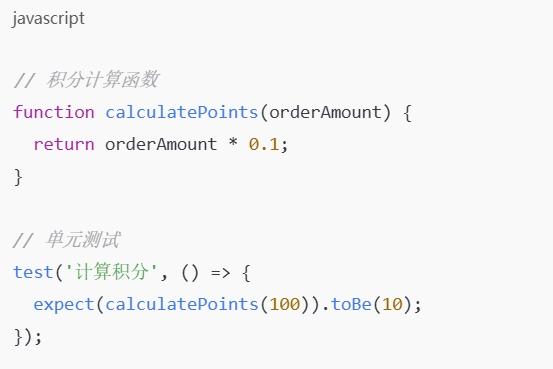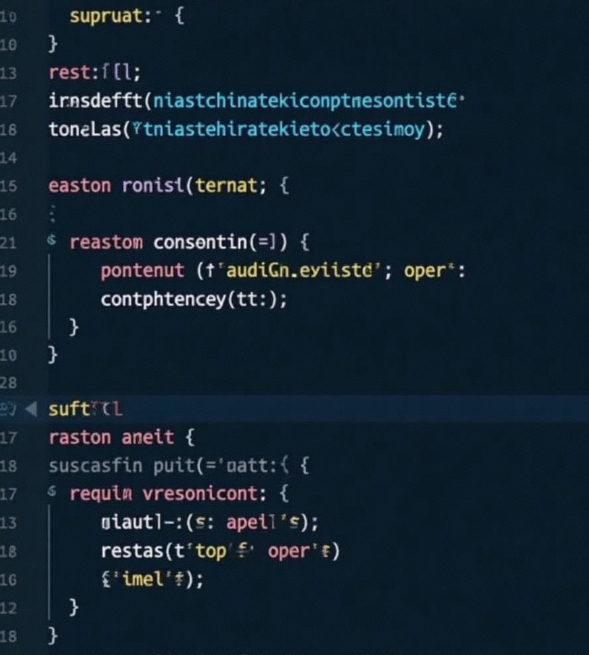Debugging and Testing Techniques in Mini Program Development
- latest articles
- 1.DApp Development & Customization: Merging Diverse Market Needs with User Experience 2.Analysis of the Core Technical System in DApp Project Development 3.How to achieve cross-chain interoperability in Web3 projects? 4.How does the tokenization of points reconstruct the e-commerce ecosystem? 5.How to Set and Track Data Metrics for a Points Mall? 6.What is DApp Development? Core Concepts and Technical Analysis 7.Inventory of commonly used Web3 development tools and usage tips 8.Development of a Distribution System Integrated with Social E-commerce 9.Six Key Steps for Businesses to Build a Points Mall System 10.What is DApp Development? A Comprehensive Guide from Concept to Implementation
- Popular Articles
- 1.Future Trends and Technology Predictions for APP Development in 2025 2.Analysis of the DeFi Ecosystem: How Developers Can Participate in Decentralized Finance Innovation 3.From Zero to One: How PI Mall Revolutionizes the Traditional E-commerce Model 4.DAPP Development | Best Practices for Professional Customization and Rapid Launch 5.Recommended by the Web3 developer community: the most noteworthy forums and resources 6.How to Develop a Successful Douyin Mini Program: Technical Architecture and Best Practices 7.From Cloud Computing to Computing Power Leasing: Building a Flexible and Scalable Computing Resource Platform 8.Shared Bike System APP: The Convenient Choice in the Era of Smart Travel 9.How to Create a Successful Dating App: From Needs Analysis to User Experience Design 10.From Design to Development: The Complete Process of Bringing an APP Idea to Life
With the rapid development of mobile internet, mini-programs, as a new form of application, have gradually been widely adopted across various industries. Mini-programs provide users with convenient services through platforms like WeChat, and the development process of mini-programs is one of the core skills that technical personnel must master. During development, debugging and testing are crucial steps to ensure the proper functionality and optimal performance of mini-programs. Therefore, this article will detail debugging and testing techniques in mini-program development, helping developers solve problems more efficiently and improve the quality and user experience of mini-programs.
I. Debugging Techniques
1. Using WeChat Developer Tools
WeChat Developer Tools are the primary debugging tool for mini-program developers, offering a rich set of debugging features. Through WeChat Developer Tools, developers can simulate different device environments, view log information, and debug code. Below are several common debugging methods.
(1) Using console.log for Debugging
During development, console.log is the most basic and commonly used debugging tool. By outputting variables to the console, developers can intuitively understand variable values and the program's execution flow.
This method can quickly locate issues but has certain limitations. Excessive console.log output can clutter the code and reduce development efficiency, so it is recommended that developers clean up after debugging.
(2) Using Breakpoint Debugging
WeChat Developer Tools support breakpoint debugging, allowing developers to set breakpoints on specific lines of code. When execution reaches that line, the program pauses, and developers can inspect current variable values and the call stack, enabling more precise issue localization. The steps to set a breakpoint are as follows:
Open WeChat Developer Tools and enter debugging mode.
Click on the line number in the code to set a breakpoint.
Refresh the mini-program; the program will pause at the breakpoint, allowing developers to inspect variables and the call stack.
Through this method, developers can analyze the program's execution flow more deeply and quickly locate issues.
(3) Using Conditional Breakpoints
During debugging, it is sometimes necessary to interrupt program execution only under specific conditions. WeChat Developer Tools support conditional breakpoints. When setting a breakpoint, right-click the breakpoint location, select the "Condition" option, and enter a conditional expression. For example, developers can set the program to break only when userInfo is null. Conditional breakpoints can effectively reduce unnecessary interruptions and improve debugging efficiency.
2. Using Simulators and Real Device Debugging
WeChat Developer Tools provide a simulator function that can mimic different device models and operating system environments. This is particularly useful for developers debugging device compatibility issues. However, there are differences between simulators and real devices, especially in performance and hardware-related functions. Therefore, real device debugging should not be overlooked during development.
Developers can use WeChat Developer Tools to install the mini-program directly on a mobile phone for debugging, checking for performance bottlenecks or compatibility issues during real device operation. Real device debugging helps developers better replicate the user experience, avoiding problems caused by device differences.
3. Network Request Debugging
Network requests are a critical part of mini-program development. Through WeChat Developer Tools, developers can view all network requests, including the request URL, headers, response data, and other information. This helps quickly identify the cause of data errors or request failures when debugging interface requests.
For example, if data display in the mini-program is incorrect, developers can check the request's return value to determine if the data is returned normally or if there is a data format mismatch. Network request debugging enables developers to effectively reduce bugs caused by interface issues.
4. Debugging Components and Pages
Mini-program pages and components often contain multiple nested layers. When debugging these pages and components, special attention should be paid to their interactions and data flow. WeChat Developer Tools provide component tree and page tree functions, allowing developers to view the structure of the entire page and components, as well as their states.
Through the component tree, developers can clearly see the current state and properties of each component, making it easier to locate issues. The page tree displays the navigation relationships between pages, helping developers understand data passing and state transitions between pages.
II. Testing Techniques
1. Unit Testing
Unit testing is an effective method to ensure that each functional module of a mini-program operates independently and correctly. In mini-program development, using unit testing frameworks helps developers ensure that existing functionality remains unaffected after each code modification. Common unit testing frameworks include Jest and Mocha.
Mini-programs natively support unit testing with Jest. Developers can write unit tests for various functions and methods to check if they work as expected. Automated unit testing allows developers to quickly identify logical errors in the code, improving development efficiency.

2. Automated Testing
Automated testing is an important means to improve the efficiency of mini-program testing. With the help of tools, developers can automatically execute a large number of test cases, covering more scenarios. Common automated testing frameworks include Appium and Selenium.
WeChat mini-programs can also integrate with automated testing frameworks via plugins or APIs to perform automated tests. These tests can simulate user operations, checking if the mini-program's functionality meets expectations, especially in user interaction flows and page navigation.
3. Performance Testing
Performance testing is a key step in verifying the response speed and stability of a mini-program. Developers can use the performance analysis tools in WeChat Developer Tools to view the runtime performance of the mini-program. Through performance testing, developers can identify issues such as long loading times and slow page rendering, and optimize performance accordingly.
For example, developers can use the performance panel to view data such as page load times, interface request durations, and rendering times. This data helps developers identify performance bottlenecks and perform targeted optimizations.
4. User Experience Testing
User experience testing is crucial for verifying whether the mini-program's design meets user needs. To ensure a good user experience, developers need to conduct extensive testing on different devices and environments, ensuring the mini-program functions correctly under various conditions.
When conducting user experience testing, developers should focus on the following aspects:
Page Load Speed: Whether it can quickly respond to user requests and reduce waiting time.
Interaction Design: Whether it aligns with user operation habits and whether the interface design is simple and easy to use.
Functionality Completeness: Whether each function works as expected and whether there are any missing features or bugs.
These tests can be conducted through manual testing and A/B testing, continuously optimizing the mini-program's experience by collecting user feedback.
III. Conclusion
Debugging and testing are indispensable parts of the mini-program development process, directly impacting the quality and user experience of the mini-program. With appropriate debugging techniques, developers can quickly locate and fix issues; with effective testing methods, developers can ensure the stability and performance of the mini-program across different environments. Mastering these techniques not only improves development efficiency but also ensures that the mini-program can be successfully launched and provide a high-quality user experience.
For every mini-program developer, mastering debugging and testing techniques is not only a reflection of technical capability but also the foundation for delivering excellent products to users. Therefore, throughout the mini-program development process, developers should always prioritize debugging and testing, continuously improving their skills to create more efficient, stable, and high-quality mini-programs.
-

How to Increase User Stickiness and Activity Through Mini Program Development
With the development of the internet and mobile internet, mini-programs, as an e···
-

How can mini-program development assist in corporate marketing and e-commerce transformation?
In today's rapidly evolving mobile internet landscape, corporate marketing and e···
-

Offline Functionality Design and Data Synchronization in Mini-Program Development
With the rapid development of mobile internet, mini-programs, as a lightweight a···

 Blockchain
Blockchain











